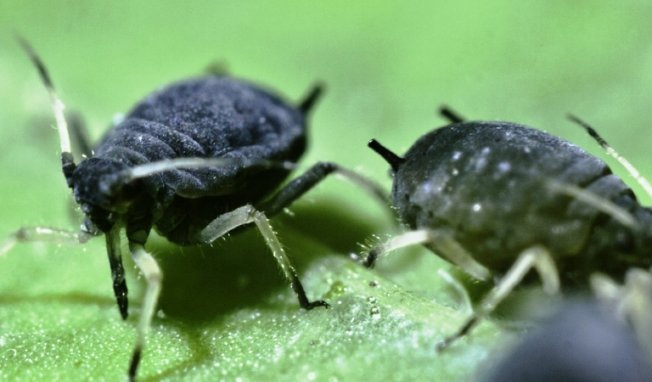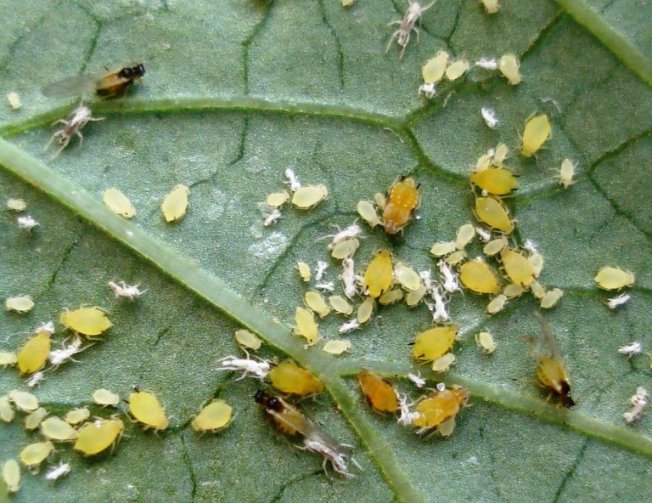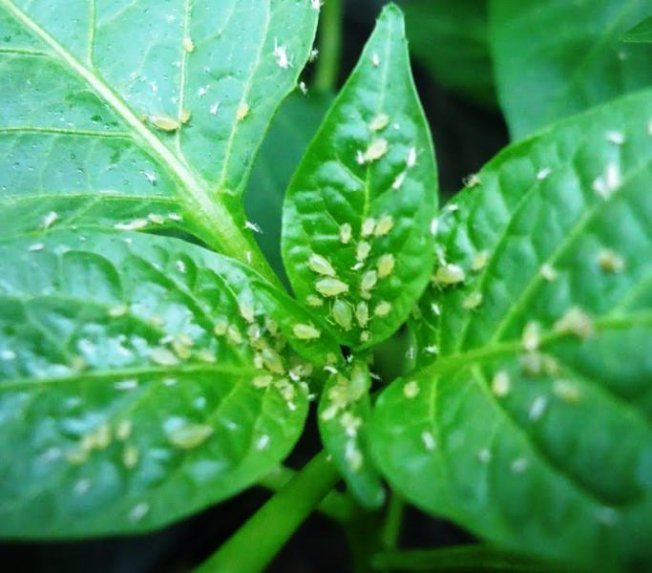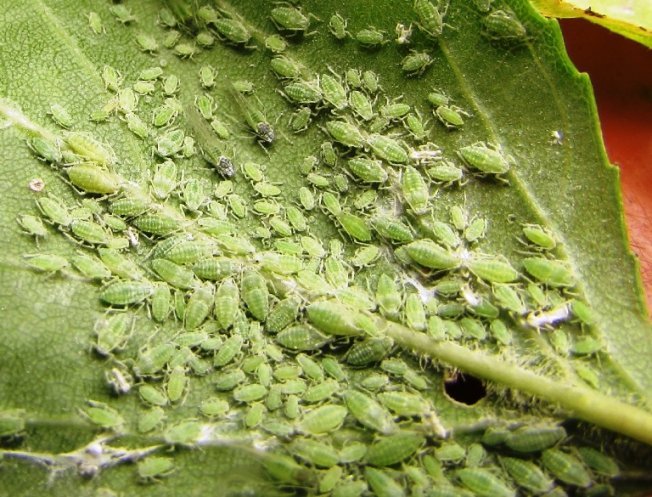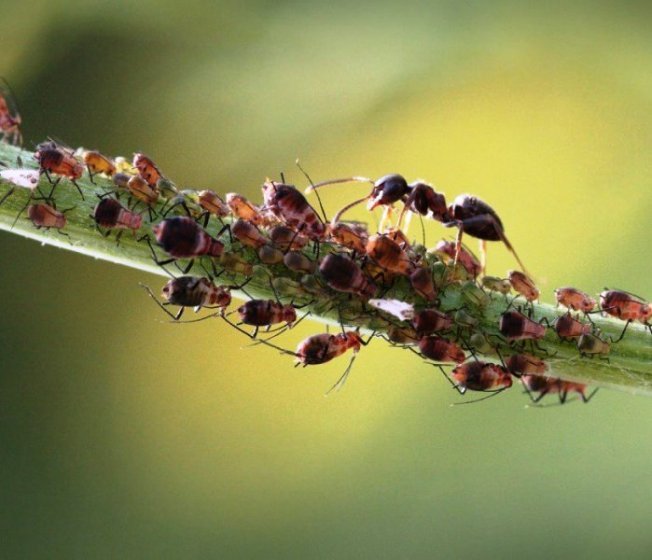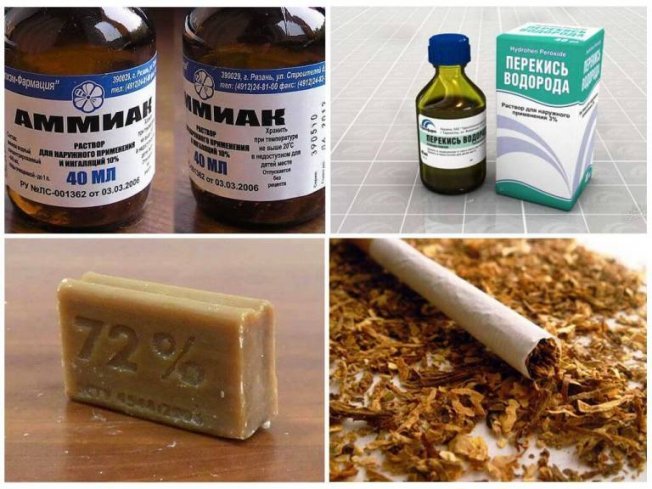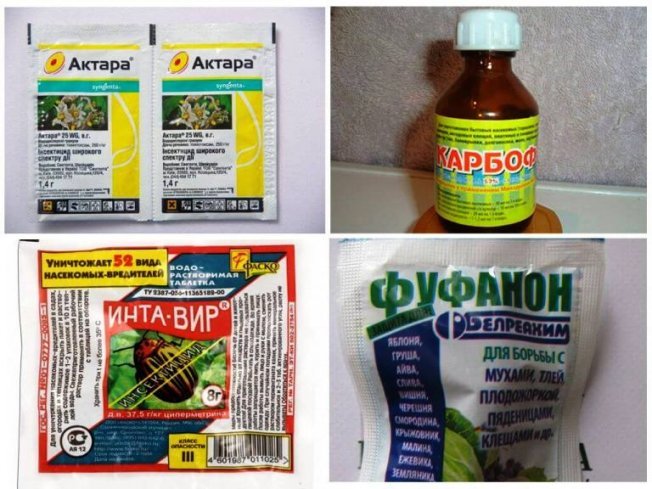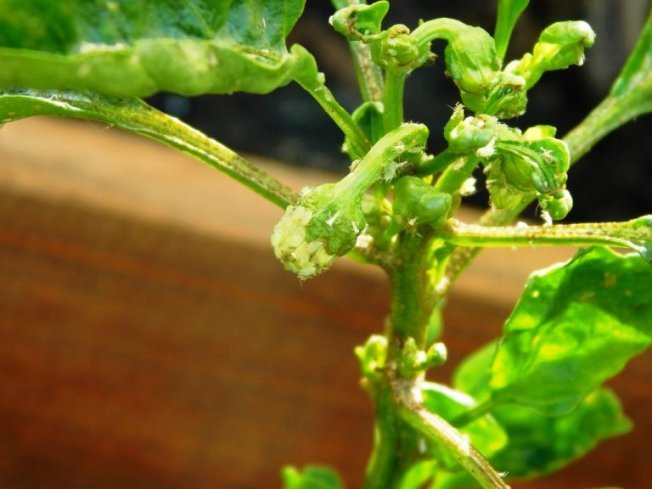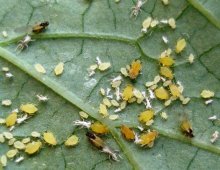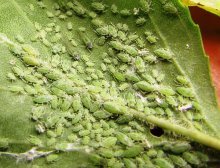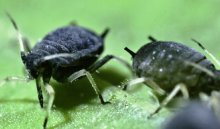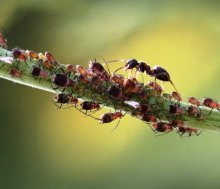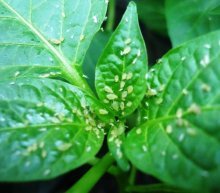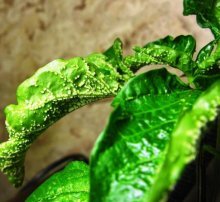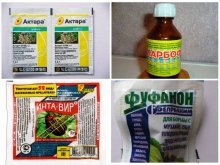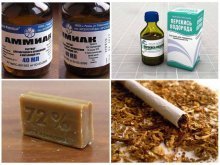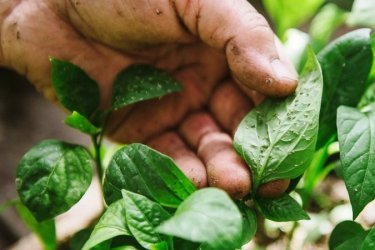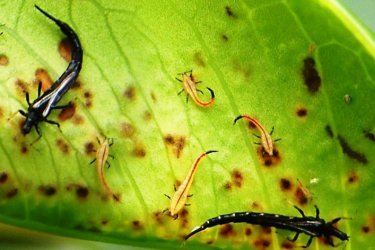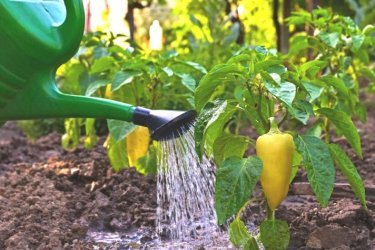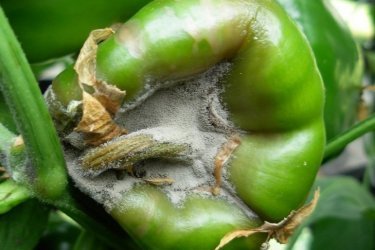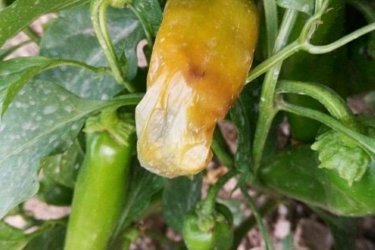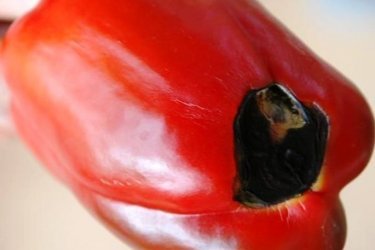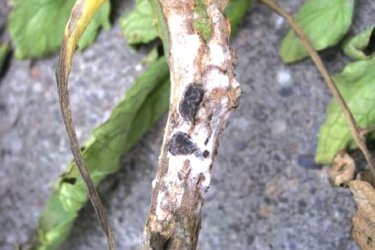Aphids on peppers in a greenhouse, how to treat them: chemicals and folk remedies
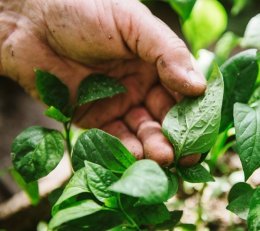
After planting, seedlings should be systematically inspected for harmful insects. It must be taken into account that even vegetable crops grown indoors are not protected from the pest. Therefore, you need to find out in advance what to do if aphids appear on peppers in a greenhouse, and how to treat the plants.
And having discovered symptoms of damage, immediately take measures to destroy the pest. Even if there are no aphids, do not refuse preventive measures - they will help preserve the harvest.
Content:
- Aphids: description and types
- Why is it dangerous?
- Where does it come from?
- Signs of aphids on peppers
- Prevention
- Fighting methods
- Aphids on peppers in a greenhouse: how to treat them, what folk remedies can be used
- Chemicals for controlling aphids on peppers in greenhouses
Aphids: description and types
Both in greenhouses and in open ground, aphids on peppers multiply very quickly. Its colonies cause significant damage to plants and can even cause their death.
Scientists have classified about 4 thousand species of aphids. Almost all of them are not particularly picky when it comes to food and can attack any plant.
The insect is small in size; its round or oval body can reach a length of several millimeters. Aphids attacking vegetable crops, grown in open ground, are slightly larger than those that live on indoor plants.
The color of insects can be different:
- black or green;
- red or pink;
- brown or transparent.
In most cases, it resembles the color of the leaves and flowers that the pest infects. There are hairs and growths on the insect's body.
The feeding organ of aphids is the proboscis, which serves to pierce the shell of the trunk and leaves, with its help the insect sucks out the juice. Three pairs of legs allow pests to move quickly in search of food; some individuals have wings and jump well.
The most common types of aphids that can be found on the site are:
- potato and cabbage;
- apple and cherry;
- pea and carrot;
- root and leaf.
Even such a toxic plant as tobacco can be affected by aphids, tobacco.
The pest is widespread and migrates easily. Pepper can infect several varieties at once.
Why are aphids dangerous?
In addition to the fact that aphids suck juices from young leaves and shoots, they carry many diseases. Even if the pest has not infected the plantings, it produces sweet honeydew, which contaminates the leaves and promotes the development of fungi.
Even the saliva of aphids is dangerous for peppers; it contains substances that are toxic to plants; in addition, it contains viruses that can cause quickly spreading diseases.
Where do aphids come from?
Aphids overwinter in soil or fallen leaves. Pest eggs can also be stored in the bark of trees or shrubs. The awakening of adult individuals that have survived the winter occurs with the onset of warm days.
Ants contribute to the spread of the pest. They carry aphids from one bush to another and protect them because The favorite food of ants is honeydew, a sticky sweet liquid that the parasites secrete.
It is useless to fight against one pest; single measures will not bring the desired effect.
Signs of aphids on peppers
An alarming signal for a vegetable grower should be the appearance of ants in the garden beds. Aphids should be looked for on the back of the sheets; upon careful inspection, insect eggs can also be seen there.
Next, whitish spots form on the leaves, sticky traces of honeydew appear, plant growth slows down, and the leaves begin to wither and dry out. Pepper flowers fall off without setting an ovary. Deformation of young shoots may be observed. Productivity is significantly reduced. Infection of young bushes can lead to their death.
Aphid reproduction becomes more active with rising air temperatures; during the summer, one female can reproduce 10 new generations.
Lack of control will lead to the fact that the population of insects in the beds will number in the thousands.
Particularly favorable for life and pest breeding greenhouse conditions, therefore, vegetable growers should pay special attention to the condition of peppers. When the first signs of damage are detected, measures should be taken immediately to destroy insect pests.
Prevention
Timely preventive measures, if not completely eliminated, will minimize the risk of aphids appearing on peppers in greenhouses.
Prevention consists of:
- in treating seeds before sowing;
- disinfection of soil in the greenhouse during the preparation of beds;
- creating normal conditions for growing seedlings;
- compliance with watering rules;
- planting sharp-smelling plants next to the peppers: onions, herbs, garlic.
In autumn and spring, before the start of the planting season, it is recommended to fumigate the greenhouse with a sulfur bomb. In summer, it is advisable to dust the soil in the beds with ash.Active control of ants will help prevent the appearance of aphids.
The natural enemies of aphids are wasps, ladybugs, and hoverflies, so you need to create conditions to attract them: plant lavender, calendula, basil, and mint.
Fighting methods
Having noticed that the pepper is weakening and looks depressed, you should support its immune system, for this you will need to feed the plant with complex fertilizers.
Before spraying the bushes, it is advisable to remove the leaves on which the most insects have accumulated and burn them.
If the seedlings are in an apartment or have fruits, then it is advisable to use folk remedies for processing.
If the flowers on the bushes have not yet opened, it is better to use chemical plant protection products.
In greenhouse conditions, both processing methods can be used. But if pests appear during fruiting and flowering, then it is still better to treat the plants with folk remedies.
Let's watch a useful video about methods of combating aphids on peppers:
Aphids on peppers in a greenhouse: how to treat them, what folk remedies can be used
Folk pest control remedies are safe for people. Since the increase in the number of parasites occurs in geometric progression, the fight against them should not be postponed for a single day.
To repel and destroy aphids, you can use products that are easy to find at home; let’s take note of the most accessible recipes and list them in the table.
| Active substance | Composition, recipe | Application, frequency of treatments |
| Sunflower oil | Sunflower oil 200 g; water 10 l | Shake the composition well before spraying. The treatment is repeated after 5 days. |
| Ammonia | Ammonia 2 tablespoons; 1 spoon of liquid soap; 10 liters of water | Pepper is processed several times with a break of 7 days; |
| Hydrogen peroxide | Peroxide 2 tbsp. l. medical alcohol 2 tbsp. spoons; dishwashing gel 1 tbsp. spoon; 9 liters of water | Spray every 5-6 days |
| Baking soda | Baking soda 1 tbsp; laundry soap, crushed 30 g; water 1 l | Treatments should be carried out after 5 days until the pests disappear |
| Laundry soap | Soap shavings 100 g; water 10 l | Use for treating bushes and the soil around them |
| Dry mustard | Mustard powder 30 g; water 400 g. Leave for 3 days, then add 10 liters of water | Repeat treatments 3-4 times, every other week |
| Sorrel | Sorrel roots 400 g; 10 liters of boiling water. Leave for 2-3 hours, cool, strain | Spray pepper once every 5 days |
| Dandelion | Dandelion leaves and stems 500 g; 10 liters of water. Leave for 2---3 hours, filter | Treat after 3-4 days, repeat the procedure until the pest completely disappears. |
It is necessary to repeat treatments; this is the only way to prevent re-infestation of the plant by new generations of aphids. The reason is that folk remedies give results only when fighting adult individuals.
It is advisable to process peppers in a greenhouse early in the morning or in the evening. The doors to the greenhouse must be open.
Let's watch a video about how to fight aphids on peppers in a greenhouse and open ground, how to treat plants against the pest, folk remedies and the principle of their use:
Chemicals for controlling aphids on peppers in greenhouses
The products used to process peppers in a greenhouse are available in a wide range of gardening stores.
In case of severe damage to plants, it is recommended to use insecticides, such as:
- Arrivo and Aktara;
- Inta-Vir and Decis;
- Fufanon and Actellik;
- Alatar and Iskra.
No less effective are the drugs included in the group of biological drugs:
- Fitoverm-M and Akarin;
- Gamair, Aktofit, Fitotsid-R.
When purchasing insecticides, keep in mind that some of them are capable of destroying parasites at any stage of development of individuals, including eggs. There are also preparations that not only fight pests, but also enrich plants with useful minerals and increase their immunity.
No matter how harmless the products may seem, it is not recommended to exceed their dosage; solutions should be prepared according to the instructions. Freshly prepared formulations should be used; most of them are not suitable for storage. When choosing a preparation, you need to pay attention to whether it is suitable for processing pepper in a greenhouse, or is intended for other crops.
Since the latest generations of insecticides are quite effective, it is sometimes possible to get rid of aphids after the first treatment of the bushes. If repeated spraying is required, it is better to purchase another product.
Insects have the ability to develop immunity to certain types of chemicals.
It should be remembered that modern plant protection products are manufactured on three different bases:
- organophosphorus compounds that are derivatives of pentavalent phosphorus;
- neonicotinoids, which cause paralysis and death of pests;
- pyrethroids, which are synthetic neurotoxic poisons.
It is not recommended to spray peppers less than 3 weeks before the intended harvest with chemicals. If an insect invasion is observed during this period, it is better to turn to folk recipes for exterminating pests.
The appearance of aphids on peppers in a greenhouse is not uncommon; they are attracted to the succulent young shoots of the plant, so vegetable growers need to know how to treat the bushes and how to get rid of pests before flowering, during it and during the ripening period of the crop.
Pests

